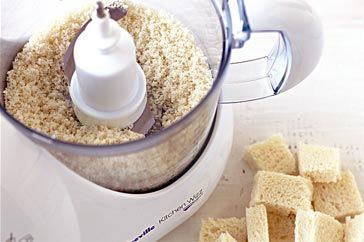Painting Ideas for Preschoolers: Unleash Your Child’s Creativity!
Welcome to the vibrant world of painting ideas for preschoolers! As parents, we know how crucial it is to provide our little ones with activities that not only entertain them but also contribute to their development. And what better way to stimulate creativity, fine motor skills, and sensory experiences than through painting!
In this guide, we’re going to dive into a palette of colourful possibilities that will have your child reaching for their brushes with excitement. From classic finger painting to innovative techniques, prepare to transform your home into an art studio that’s brimming with joy and imagination!
Why Painting is Great for Preschoolers
Before we roll up our sleeves and get into the nitty-gritty of painting projects, let’s brush up on why painting is so beneficial for our preschoolers:
- Expressive Development: Painting provides a canvas for children to communicate emotions and ideas, even before they’ve fully mastered language.
- Sensory Exploration: The textures, colors, and actions involved in painting engage multiple senses, offering a rich educational experience.
- Fine Motor Skill Improvement: Holding brushes and making deliberate strokes helps strengthen those tiny hand muscles crucial for writing.
- Cognitive Growth: Deciding what to paint and how to mix colors promotes decision-making and problem-solving skills.
Setting Up Your Preschooler’s Painting Space
Having a dedicated painting area will make art time special and help minimize messes. Here’s how to set up the perfect little artist’s corner:
- Choose an Easy-to-Clean Area: A space with tile, linoleum, or a drop cloth will make cleanup a breeze.
- Organize Supplies: Keep brushes, paints, and paper within reach so your preschooler can access them independently.
- Set Up a Drying Station: Have a specific spot for wet masterpieces to avoid smudges and smears.
- Display Their Art: Dedicate a wall or refrigerator space to show off their creations, this boosts confidence and encourages them to keep creating.
Creative and Easy Painting Ideas for Preschoolers
Now that we’ve got our studio ready, it’s time to explore some exciting painting ideas that will make your little one’s creativity soar. Here are some super fun projects that you can start with:
Finger Painting Fun
Let’s kick things off with a classic – finger painting. It’s the perfect project for beginners, and it’s wonderfully tactile.
- Materials Needed: Non-toxic finger paints, large sheets of paper, and a willing pair of hands!
- What to Do: Show your child how they can use their fingers to draw shapes, mix colors, and create bold patterns.
Finger painting is not just about the final piece; it’s the process that counts. Not only does it help with sensory processing, but it’s also a fantastic way for your child to experiment with color mixing and the physical properties of paint.
Brushwork Basics
Moving on from fingers to brushes introduces a new level of control and technique in your child’s painting journey.
- Materials Needed: Various brush sizes, tempera or watercolor paints, thick paper or canvas.
- What to Do: Teach them how to hold the brush and guide them through making different strokes – from broad swishes to fine lines.
It’s amazing to watch a child discover the different textures and patterns they can create with a simple change in brush size or pressure. Encourage them to try a combination of fast slashes and slow, deliberate strokes.
Vegetable Stamping Wonderland
Who said you need to stick to traditional brushes? For a fresh twist, why not try vegetable stamping?
- Materials Needed: Halved potatoes, carrots, or celery, paints, and paper.
- What to Do: Dip the cut side of the veggies into paint and stamp them onto paper to create fun, organic shapes.
This not only sparks creativity but also teaches children about patterns, symmetry, and the use of unconventional materials. Don’t forget to talk about the vegetables themselves – it’s a splendid opportunity for a mini lesson in nutrition, too!
Engaging our preschoolers in art activities like painting helps to lay the foundation for a lifelong love of learning and creativity. The best part? You get to join in the fun and witness the blossoming of your child’s artistic abilities firsthand. So, what are you waiting for? Gather those bottles of paint, and let’s color the world with the joyful spirit of our little ones!
Ready to add more colors to your preschooler’s artistic palette? Keep an eye out for part two of our guide where we’ll explore even more exciting painting ideas for preschoolers! In the meantime, remember that every brushstroke is a conversation, every color choice is a decision, and every painting is a window into your child’s imagination. Discovering art together is a beautiful way to create lasting memories and masterpieces. Stay tuned for further inspiration in the wonderful world of preschool painting!

5 Essential Tips for Preparing for Painting with Preschoolers
Before you unfurl the paints and dazzle the senses with a rainbow of colors, there are some important things to consider. Here are five essential tips for parents preparing for painting activities with preschoolers:
1. Dress for Mess and Success
Make sure your little artist is dressed in old clothes or a smock that can handle stains. Consider slip-on shoes or bare feet to avoid paint tracks through the house, and have a cleanup kit ready with wet wipes and towels for those inevitable spills and splatters.
2. Safety First: Non-Toxic Materials
Always choose non-toxic, washable paints and materials that are safe for young children. Check the labels for age recommendations and safety certifications. It’s also a good time to chat about not eating the paint, no matter how delicious those colors look!
3. Embrace the Process, Not Just the Product
Remember, for preschoolers, the process of painting is more important than the outcome. Encourage freedom of expression, and avoid directing too much. Resist the urge to correct. Each stroke, smudge, or dab is a part of their learning and an expression of their individuality.
4. Be Prepared for Short Attention Spans
Preschoolers may move quickly from one activity to the next. Have everything ready before you begin, so there’s no wasted time setting up. This will help you maximize their engagement during those precious moments of focus.
5. Cultivate Patience and Praise
Be patient as they explore and learn. Offer plenty of praise for their efforts, their willingness to try new things, and their creativity in using colors and materials. Positive reinforcement will nurture their love for painting and art in general.
With these tips in mind, you’re all set to lead your preschooler on a marvelous adventure in painting!
Stay Tuned for More Artistic Adventures!
Ready to add more colors to your preschooler’s artistic palette? There’s a whole spectrum of painting experiences to explore, each with their unique benefits and joys. This guide has covered some fantastic starting points and handy tips for making painting with preschoolers a fun and fruitful experience, but there’s so much more to discover!
Keep an eye out for part two of our guide where we’ll dive deeper into the world of preschool painting. We’ll discover even more engaging activities that promote creativity and development, explore different painting mediums, and provide useful tips on preserving and displaying your child’s art. Stay tuned for further inspiration in the colorful and imaginative world of preschool painting!
See more great Things to Do with Kids in New Zealand here. For more information see here
Disclaimer
The articles available via our website provide general information only and we strongly urge readers to exercise caution and conduct their own thorough research and fact-checking. The information presented should not be taken as absolute truth, and, to the maximum extent permitted by law, we will not be held liable for any inaccuracies or errors in the content. It is essential for individuals to independently verify and validate the information before making any decisions or taking any actions based on the articles.




